Kruskal’s algorithm : Reference
| Image | Description |
|---|
 | AD and CE are the shortest arcs, with length 5, and AD has been arbitrarily chosen, so it is highlighted. |
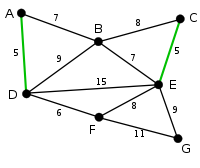 | CE is now the shortest arc that does not form a cycle, with length 5, so it is highlighted as the second arc. |
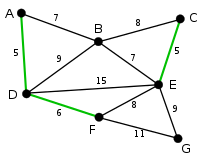 | The next arc, DF with length 6, is highlighted using much the same method. |
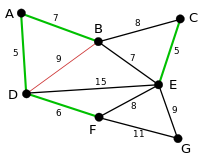 | The next-shortest arcs are AB and BE, both with length 7. AB is chosen arbitrarily, and is highlighted. The arc BD has been highlighted in red, because there already exists a path (in green) between B and D, so it would form a cycle (ABD) if it were chosen. |
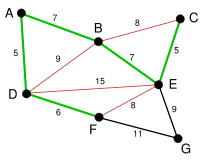 | The process continues to highlight the next-smallest arc, BE with length 7. Many more arcs are highlighted in red at this stage: BC because it would form the loop BCE, DE because it would form the loop DEBA, and FE because it would form FEBAD. |
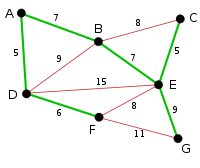 | Finally, the process finishes with the arc EG of length 9, and the minimum spanning tree is found. |
Incoming search terms:







